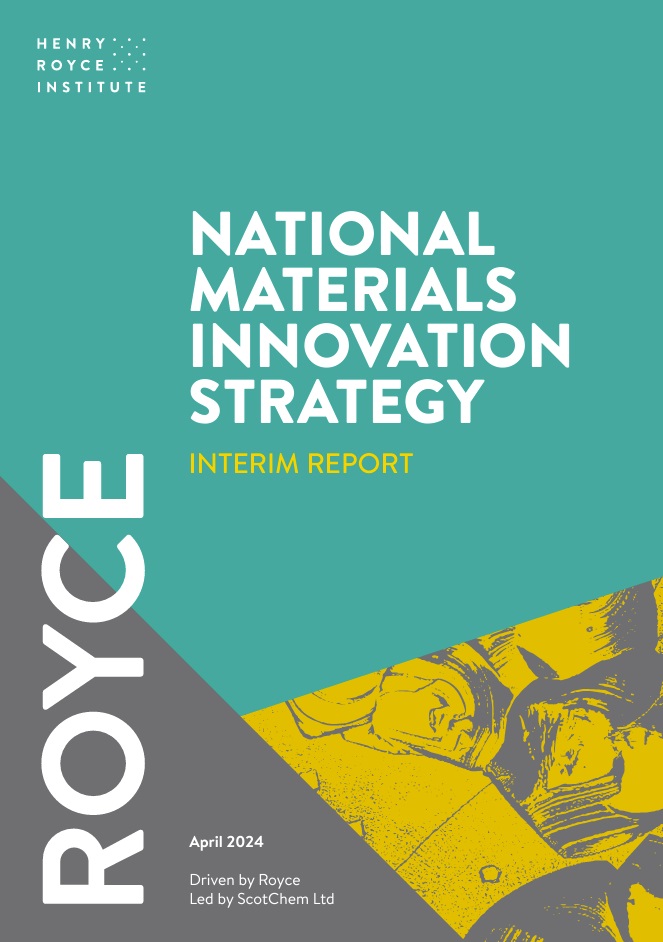Materials
Quantum
World first for start-up with photonics-powered “binoculars” eye scanner
Reading time: 4 mins
Why David Knowles, CEO of the Henry Royce Institute, believes a national materials innovation strategy is key to the UK economy.
Speaking at Innovate UK’s Materials Research Exchange (MRE) event in London last month, Henry Royce Institute CEO David Knowles made “a call to arms.” Knowles was talking about Royce’s newly unveiled National Materials Innovation Strategy interim report, and the need to form 30 working groups to help shape the strategy further, overcoming specific challenges across industry sectors.

“We need a national strategy around materials,” said Knowles. “Materials is pervasive. Everyone knows about it but people have told me that materials is everyone’s second best friend. That’s really annoying because materials should be leading.”
Knowles reeled off some numbers to illustrate the industry’s current worth to the UK economy. He said that the materials sector contributes £45bn annually and employs over 635,000 people in more than 2,500 companies. The sector also attracts significant external investment, securing an average of over £2bn each year for innovation, he added.
Materials is also “fundamental” to the UK’s net zero ambitions, said Knowles. Here the interim report suggests that the efficient and sustainable generation, storage, transmission, and use of energy is a high-profile challenge for society, and materials discovery and development play a crucial role in addressing this challenge. It also highlights that the UK has clear strengths in this area but it does not provide specific details or action points related to achieving net zero emissions.
This is where Knowles is looking for support, to go down to a more granular level, with industry expertise helping to shape priorities.
“We’re not trying to deal with everything here,” said Knowles. “We’re trying to focus on the key things that are going to have an impact. We want to put in place a materials innovation leadership group, to help steer this, and give it, not just the necessary airing and credibility, but actually bring in the right players.”
Royce is looking to form 30 expert working groups of around 10 people, to contribute to the development and implementation of the national strategy
Knowles added that Royce has therefore focused on the national priorities and bringing together industrial clusters.
To that end, the strategy identifies six core themes of high-priority material applications or properties: energy materials; soft materials; biocompatible materials; structural materials; materials for surface enhancement and protection; and materials for electronics, telecommunications, sensing, and computing technologies. Each core theme has specific opportunity workstreams that require focused action to meet the needs of industry.
The strategy also needs to address challenges that cross over into all sectors, including sustainability and the circular economy, materials 4.0 and digital thread, skills development, critical minerals and materials, manufacturing and scale-up, and policy, regulation, and standards. These crossover themes present challenges that need to be addressed through a national effort to support innovation in materials.


Royce is looking to form 30 expert working groups of around 10 people, to contribute to the development and implementation of the strategy. While this strategy process is currently at a halfway point, Knowles and Royce believe there are already opportunities emerging from the research and working groups.
“How can we accelerate some of those low-hanging fruit areas before we’ve even got the full strategy in place?” asked Knowles, adding that the Royce industrial collaboration programme’s sprint projects give research teams and businesses an opportunity “to tackle major problems in industry,” through collaboration.
Ultimately this is about supporting UK businesses that are driving innovation in this space, around 90% of which are small to medium-sized businesses, 70% of which are also outside of the south east of the country.
“We’ve got to keep supporting those bringing the materials technologies through,” said Knowles. “We know we’ve got resource constraints with things like iridium, for example, and if we don’t solve these problems, we won’t have a hydrogen economy. So we really need to fill in the gaps and put the foot on the gas in those areas.”
The strategy will be delivered towards the end of this year, or at the start of January 2025.
Anyone interested in signing up for the expert working groups, fill out the simple expression of interest form.



Working as a technology journalist and writer since 1989, Marc has written for a wide range of titles on technology, business, education, politics and sustainability, with work appearing in The Guardian, The Register, New Statesman, Computer Weekly and many more.
Quantum
Reading time: 10 mins
Quantum
Reading time: 10 mins
Quantum
Reading time: 11 mins
Robotics
Reading time: 1 mins
Quantum
Reading time: 3 mins